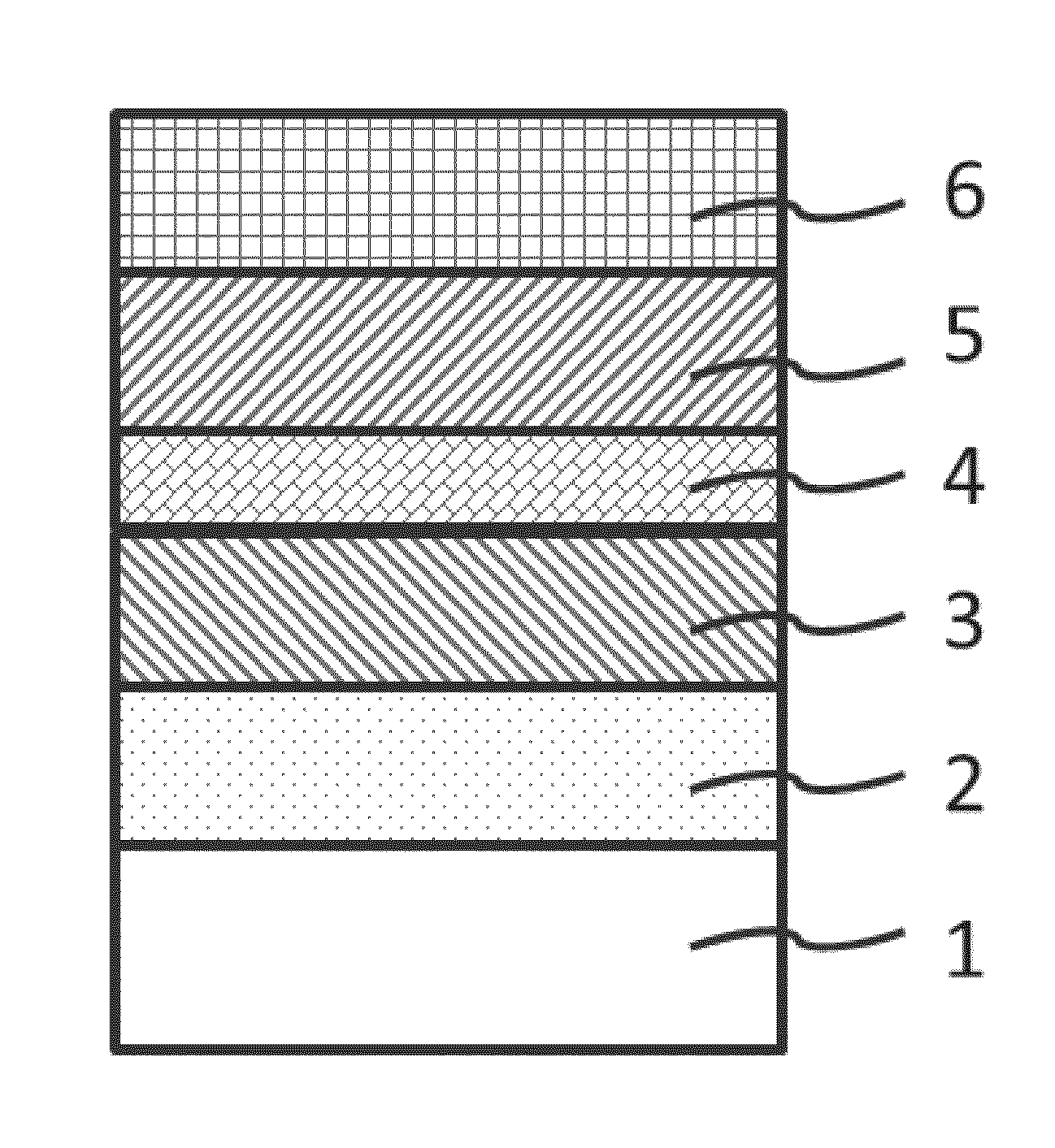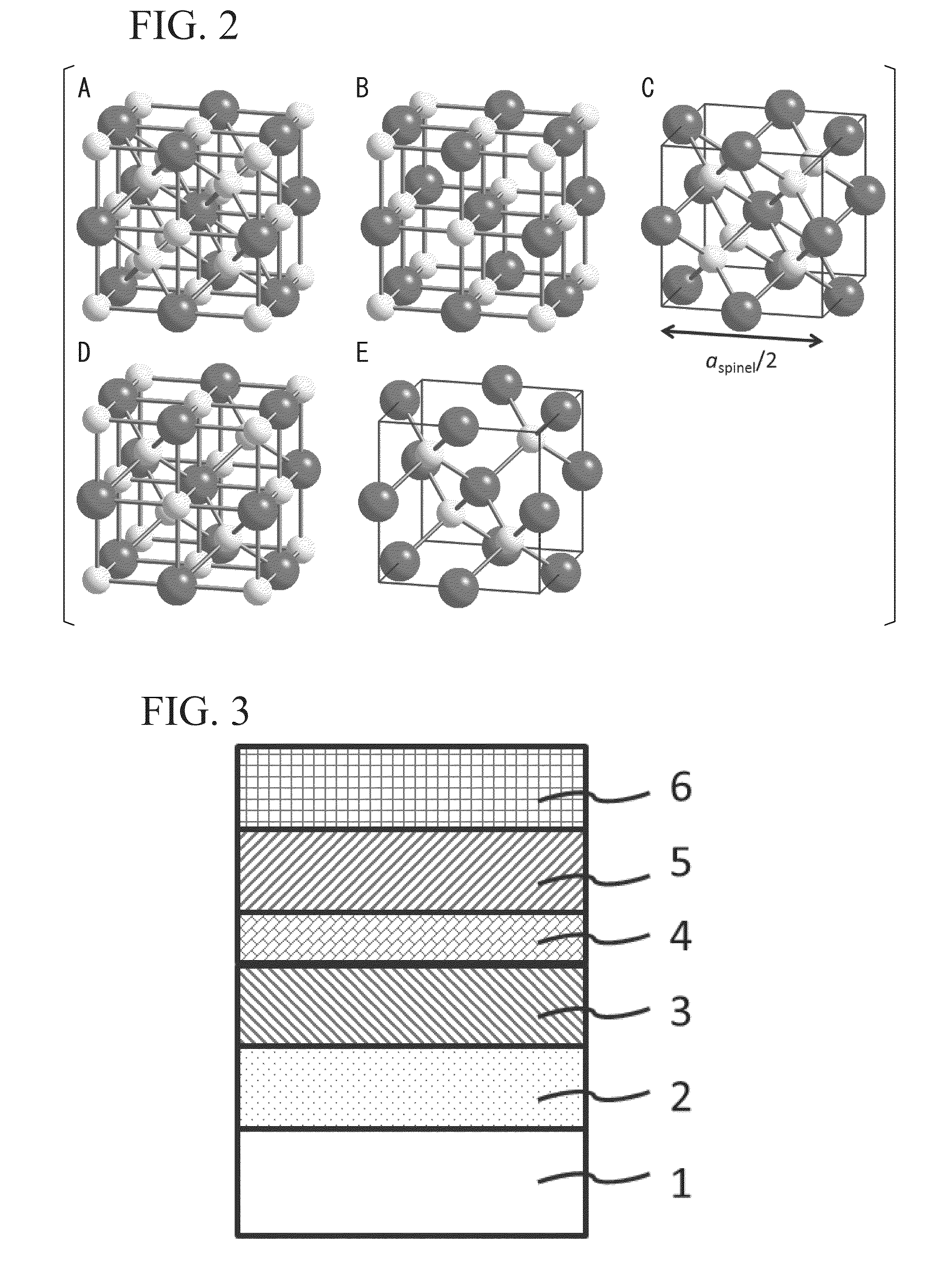Ferromagnetic Tunnel Junction Structure and Magnetoresistive Effect Device and Spintronics Device Utilizing Same
a tunnel junction and magnetoresistive effect technology, applied in the direction of magnetic field-controlled resistors, semiconductor devices, galvano-magnetic material selection, etc., can solve the problems of low resistance of the mtj device, generation of defects such as mgo barrier dislocation, and low tmr value, so as to suppress the deterioration of the element during the device processing process, reduce the mismatch of the lattice, and reduce the tmr value
- Summary
- Abstract
- Description
- Claims
- Application Information
AI Technical Summary
Benefits of technology
Problems solved by technology
Method used
Image
Examples
example 1
[0071]Under room temperature, a Cr layer of 40 nm in thickness and Fe layer of 30 nm in thickness were sequentially stacked on a MgO (001) substrate using a magnetron sputtering device, where the Cr layer was formed as a buffer layer. After that, the substrate was subjected to heat treatment at 200° C. for 15 minutes to improve crystallinity of the Fe film. Next, Mg film of 0.45 nm was formed at room temperature. The obtained stacked film (stacked structure) of MgO (001) substrate / Cr (40 nm) / Fe (30 nm) / Mg (0.45 nm) was introduced into a chamber for oxidation. Mg33Al67 layer of 1.5 nm was formed on the Mg layer by sputtering a target having Mg33Al67 alloy composition. Ar and oxygen were introduced into the chamber, and Mg—Al oxide film was formed by induced plasma coupling (ICP) treatment. In this treatment, the ratio of the partial pressures of Ar and oxygen was 3:17, the total gas pressure was 6 Pa, and the duration of oxidation was 15 seconds.
[0072]The stacked film was introduced ...
example 2
[0091]Except for the target composition of Mg17Al83, using the same method as Example 1, MTJ device of Cr (40 nm) / Fe (30 nm) / Mg (0.45 nm) / Mg17Al83 (0.9 nm)-O / Fe (7 nm) / IrMn (12 nm) / Ru (7 nm) structure was prepared, where “Mg (0.45 nm) / Mg17Al83 (0.9 nm)-O” denotes an Mg—Al—O layer that was formed by oxidation of Mg layer of 0.45 nm and Mg17Al83 layer of 0.9 nm stacked on the Mg layer.
[0092]It was confirmed that the Mg—Al—O layer had a disordered spinel structure like as Example 1. Because of the large Al amount, the lattice constant of Mg—Al—O was further reduced, and the in-plane lattice mismatch of the barrier layer and the Fe layer in the obtained junction was as low as 0.1%.
[0093]Large TMR value was obtained such that TMR value at 15K was 304%, and TMR value at room temperature was 185%. Along with realization of the high lattice matching, as shown in FIG. 7, Vhalf showed large value of 1400 mV at positive bias voltage, and 1200 mV at negative bias voltage. Here, positive bias is...
example 3
[0094]Except for forming a CoFe alloy layer between the upper and lower magnetic layers and the barrier layer, according to the same manner as Example 1 and Example 2, an MTJ having Cr (40 nm) / Fe (30 nm) / Co50Fe50 (2.5 nm) / Mg (0.45 nm) / Mg33Al67 (0.9 nm)-O / Co50Fe50 (2.0 nm) / Fe (5 nm) / IrMn (12 nm) / Ru (7 nm) was produced. CoFe alloy has a bcc structure and substantially same lattice constant with Fe. Therefore, CoFe layer inserted between the Fe layer and the barrier layer was also grown epitaxially. Since spin polarization of CoFe alloy is larger than that of pure Fe, TMR values at 15K and at room temperature were largely increased to 479% and 308% compared to the case of using Fe.
PUM
 Login to View More
Login to View More Abstract
Description
Claims
Application Information
 Login to View More
Login to View More - R&D
- Intellectual Property
- Life Sciences
- Materials
- Tech Scout
- Unparalleled Data Quality
- Higher Quality Content
- 60% Fewer Hallucinations
Browse by: Latest US Patents, China's latest patents, Technical Efficacy Thesaurus, Application Domain, Technology Topic, Popular Technical Reports.
© 2025 PatSnap. All rights reserved.Legal|Privacy policy|Modern Slavery Act Transparency Statement|Sitemap|About US| Contact US: help@patsnap.com



